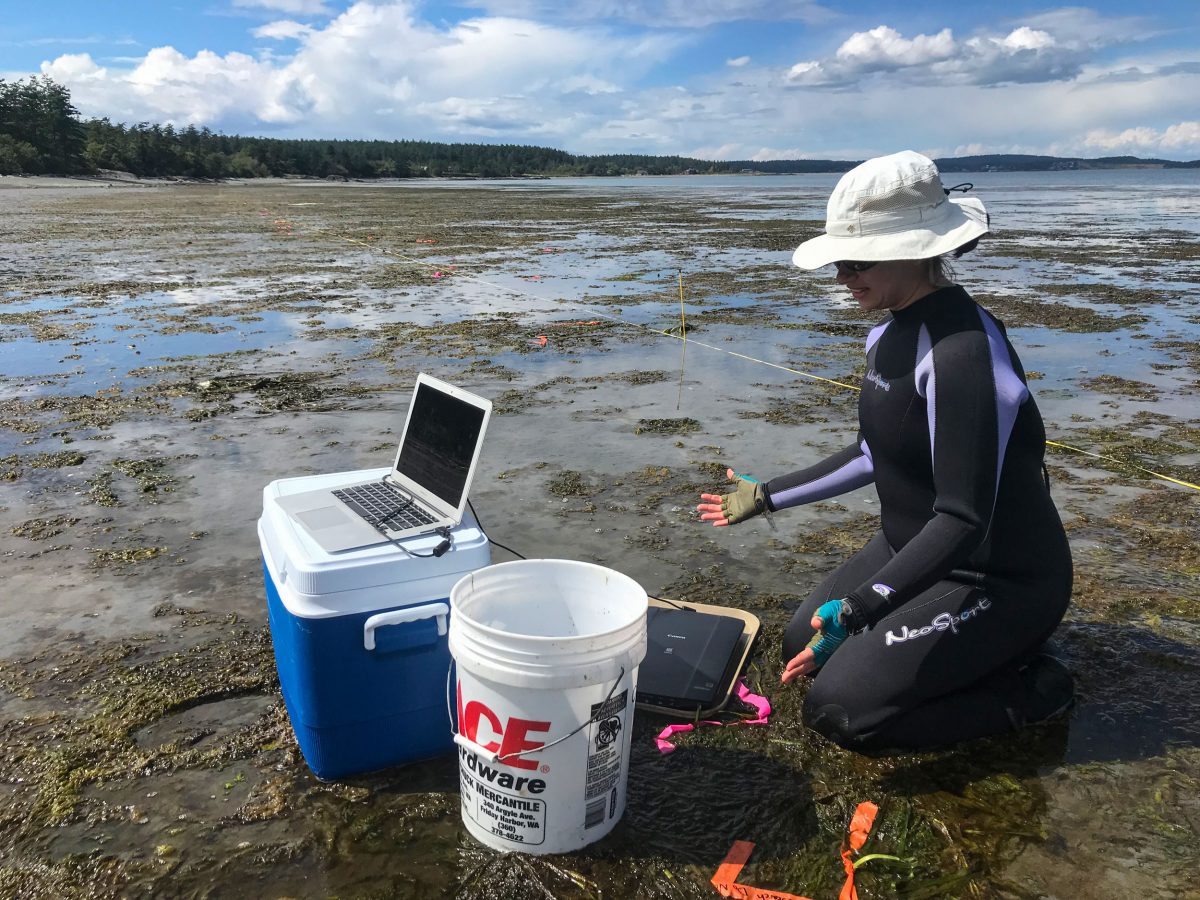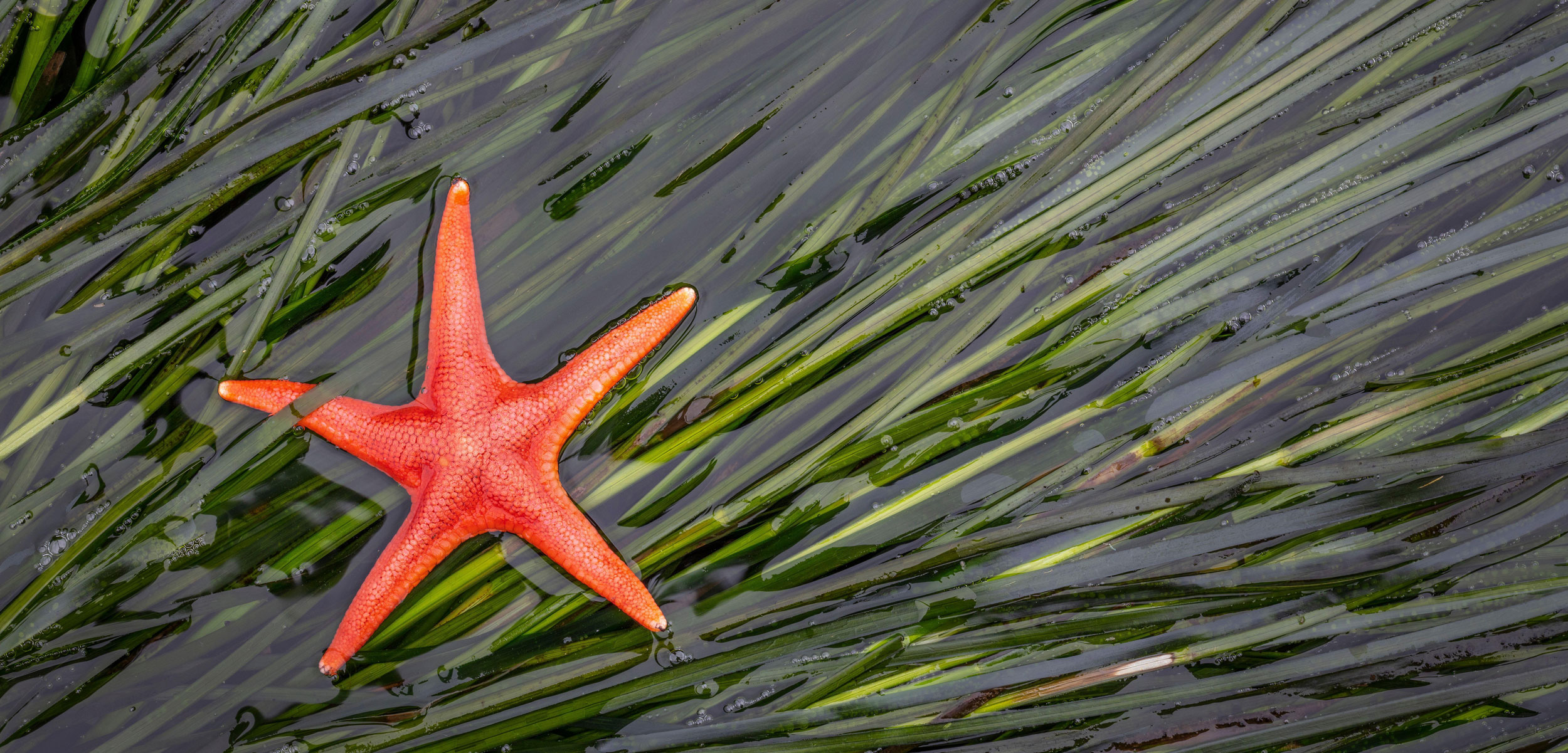Tracking the Effects of an Eelgrass Epidemic
Even when it’s less than lethal, seagrass wasting disease leaves eelgrass reeling.
Article body copy
In shallow intertidal waters of the northeast Pacific, eelgrass meadows grow across the ocean floor like submerged lawns. These meadows are the foundation for underwater neighborhoods that shelter and feed animals such as crabs, salmon, herring, and mussels. But a sickness called seagrass wasting disease is putting the future of these communities at risk.
Seagrass wasting disease isn’t pretty: it afflicts eelgrass with dark, spreading lesions. The disease caused mass die-offs of Atlantic eelgrass in the 1930s, and it wasn’t until 1988 that the culprit behind the illness was identified as the microscopic pathogen Labyrinthula zosterae.
The pathogen that causes seagrass wasting disease is widespread, says Maya Groner, a disease ecologist at the Bigelow Laboratory for Ocean Sciences in Maine. But really large die-offs are not that common, she says.
Now, however, researchers at New York’s Cornell University led by ecologists Olivia Graham and Lillian Aoki have shown that even when the disease doesn’t kill eelgrass, it can still have a range of dire effects. Their study explores how seagrass wasting disease impairs eelgrass growth in the wild, and how it may harm the plant’s ability to survive through winter.
To learn more about how seagrass wasting disease affects wild eelgrass, the Cornell team headed to an intertidal meadow off San Juan Island in Washington State. With pink flagging tape in hand, they marked a collection of infected eelgrass shoots and returned a week later to collect the tags and see how the disease had progressed.

Mark-and-recapture is a method often used by biologists studying wild animals. But by tagging blades of eelgrass, researchers could track how seagrass wasting disease afflicted individual plants. Photo courtesy of Olivia Graham
The researchers found that eelgrass shoots with larger lesions had less sugar stored in their underground root systems. This could spell trouble in the long term, says Graham, as the plants depend on their sugar reserves to survive harsh winter conditions.
The team also used high-quality before-and-after photos of the collected blades to show that the more the seagrass wasting disease lesions spread, the slower the eelgrass blades grew.
“It’s almost a race between the pathogen and the plant,” says Groner, who wasn’t involved in the study. With lesions growing much faster than eelgrass blades, the plants are fighting a losing battle against the disease, she says.
Scientists often focus on the deadly impacts of disease, Groner says. It is far more challenging to track the subtle, slow ways that pathogens can harm their hosts. But this research has shown that even when seagrass wasting disease doesn’t kill eelgrass outright, it still impairs the plants and could impact the health of intertidal meadows.

